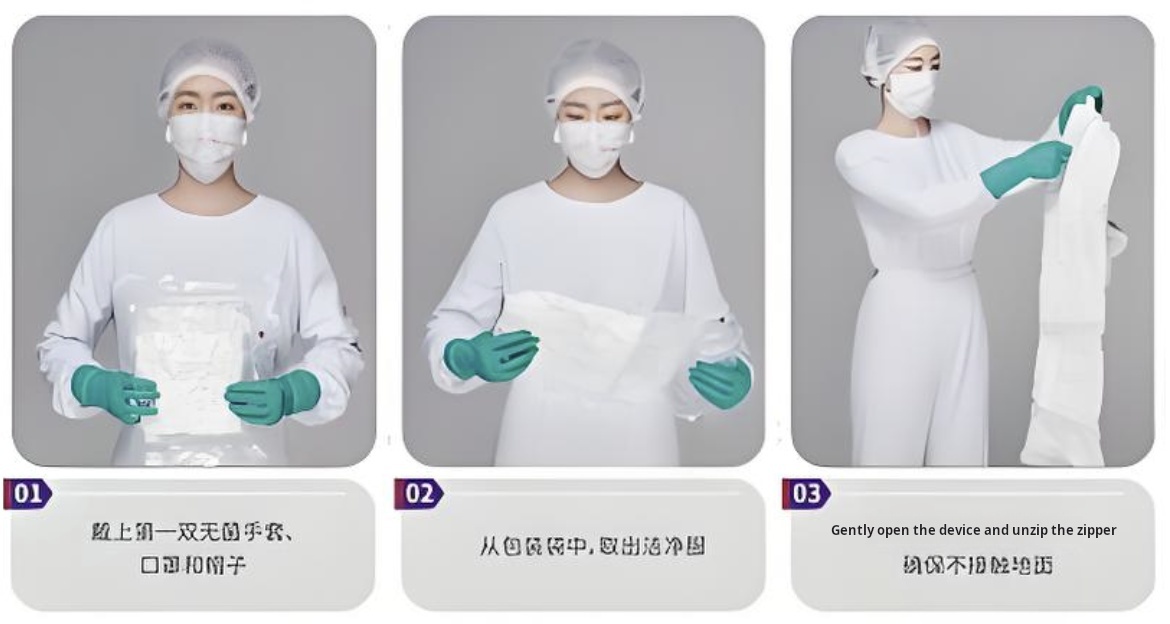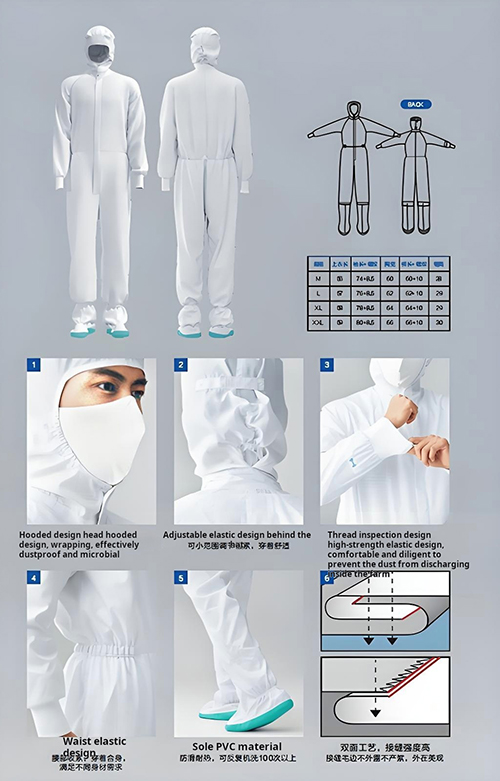Cleanroom Gowning Requirements
Essential Practices for Contamination Control
Proper gowning procedures are critical in cleanroom environments to maintain air cleanliness standards and prevent contamination. Different cleanroom classes have specific gowning requirements that ensure personnel do not introduce particulates or microbes into controlled environments. This article provides a comprehensive guide to cleanroom gowning protocols, emphasizing the requirements for various iso classes.
Why Proper Gowning Matters
- Prevents introduction of contaminants
- Maintains product quality and safety
- Protects personnel from hazardous materials
- Ensures regulatory compliance

CleanRoom Classification Comparison
| ISO Class | Particle Count (≥0.5 µm/m³) | air changes/Hour | Filter Coverage |
|---|---|---|---|
| ISO Class 5 | 100 | ≥300 | 60-70% |
| iso class 6 | 1,000 | ≥180 | 20-30% |
| iso class 7 | 10,000 | 30-60 | - |
| ISO Class 8 | 100,000 | 15-25 | - |
Detailed Gowning Requirements by ISO Class
ISO Class 5 Gowning Requirements
ISO Class 5 Cleanrooms, also known as Class 100, require stringent gowning protocols due to their low allowable particle count of 100 particles (≥0.5 µm) per cubic meter.
Key Requirements:
- Gowning Materials: Nonwoven materials like Goretex recommended for low particle shedding
- Protective Apparel: Beard covers, face masks, booties, coveralls, gloves, hair covers, and hoods
- Air Filtration & Flow: 60-70% filter coverage and ≥300 air changes/hour
ISO Class 6 Gowning Requirements
Similar to ISO Class 5, ISO Class 6 Cleanrooms demand comprehensive protective measures, yet they allow up to 1,000 particles (≥0.5 µm) per cubic meter.
Key Requirements:
- Gowning Apparel: Nonwoven materials including beard covers, booties, coveralls, gloves, and hair covers
- Filtration & Air Changes: 20-30% filter coverage with ≥180 air changes/hour
ISO 7 Gowning Protocol
ISO 7, or Class 10,000 Cleanrooms, accommodate slightly relaxed gowning protocols compared to higher classifications.
Key Requirements:
- Coveralls and Hoods: Full-body coveralls and hoods to minimize particle shedding
- Gloves and Booties: Sterile gloves and shoe covers prevent contamination
- Face Masks: Limit respiratory emissions
- Air Management: 30-60 air changes/hour
iso 8 Gowning Guidelines
ISO 8 Cleanrooms, equivalent to Class 100,000, have more lenient clothing requirements.
Key Requirements:
- Frocks: Used instead of full coveralls
- Basic Masks: Standard face masks and hair coverings
- Shoe Covers: Essential for preventing contamination
- Air Changes & Sterility: 15-25 air changes/hour
Proper Cleanroom Gowning Procedure
- Begin with Cleanliness: Full handwashing and stepping on a sticky mat multiple times
- Head to Toe Gowning: Start with gloves or glove liners, then bouffant cap and beard cover
- Layering Apparel: Add hood and face mask, adjusting nosepiece for proper fit
- Footwear Preparation: Clean shoes with brush before donning overshoes or booties
- Overall Protection: Wear coveralls, tucking in sleeves and garments
- Final Touches: Apply alcohol on glove liners, secure gloves over sleeves
- Leave No Detail Unchecked: Wipe down gowning benches and check fit via mirrors

Additional Considerations:
- Air Changes and Particle Count: Ensure sufficient air changes according to ISO class
- Sterility: Extra precautions needed for sterile environments to prevent cross-contamination
- Training: Regular training and certification for personnel
- Auditing: Periodic checks to ensure compliance
Common Questions and Answers
Q: How does cleanroom gowning help maintain cleanliness?
A: It prevents personnel from introducing particulates into the environment, maintaining sterile conditions.
Q: Why is the order of gowning important?
A: Following a specific order ensures no accidental contamination occurs during the process.
Q: What differences exist between ISO 5 and ISO 8 gowning requirements?
A: ISO 5 requires more comprehensive coverage with specific materials, whereas ISO 8 allows less intensive protection due to higher permissible particle counts.
Conclusion
Adhering to cleanroom gowning requirements is fundamental to maintaining low particulate levels and preventing contamination in controlled environments. Organizations like Deiiang™, under the guidance of product designer Deiiang Jason.peng, incorporate these rigorous standards into their Cleanroom designs, ensuring efficiency and safety for various applications.
Key Takeaways:
- Gowning requirements vary significantly by ISO class
- Proper procedure is critical for contamination control
- Material selection impacts particle shedding
- Regular training ensures compliance
- Airflow management complements gowning protocols
References
- International Organization for Standardization. ISO 14644-5: Cleanrooms and Associated Controlled Environments – Part 5: Operations.
- U.S. Food & Drug Administration (FDA). Guidance for Industry: Sterile Drug Products Produced by Aseptic Processing.
- Institute of Environmental Sciences and Technology (IEST). IEST-RP-CC003: Garment System Considerations for Cleanrooms and Other Controlled Environments.
- United States Pharmacopeial Convention (USP). USP General Chapter <797> Pharmaceutical Compounding — Sterile Preparations.
- Good Manufacturing Practice (GMP) Guidelines by the European Medicines Agency: Annex 1: Manufacture of Sterile Medicinal Products.
- ASTM International. ASTM F51 – 00: Standard Test Method for Design and Performance of Cleanroom Garments.
- World Health Organization (WHO). Guidance on Good Manufacturing Practice for Sterile Pharmaceutical Products.
- cleanroom technology Magazine. Best Practices for Cleanroom Gowning Procedures.
 +86 18186671616
+86 18186671616 Jason@cleanroomequips.com
Jason@cleanroomequips.com
 MENU
MENU



